In the shadow of the Western Berks Landfill lies the Hoch Cemetery. Situated in Cumru Township, on High Hill – a peninsula made by the bend in the Schuykill River. This 400 acres was once part of Poplar Neck Farm, which was established by Samuel Hoch in 1745. Samuel was the grandson of Rudolph Hoch who came to America from Switzerland in 1717 and settled in Oley.
At the time Samuel purchased Poplar Neck he anglicized his surname from Hoch to High. Samuel was married to Esther Herbein and together they had four children; Johannes, Isaac, Susanna and David. Both Samuel and son Isaac served as Berks County Commissioners in the 1700s. Unfortunately, the Hoch’s were predeceased by all of their children. The very first burial written in stone in the Hoch Cemetery was of 9-year-old son David in 1769. Johannes died in 1781 at age 30, then Susanna in 1785 at age 27. Isaac, a Revolutionary War veteran, died in 1794 at age 42, and Samuel in 1795 at 63.
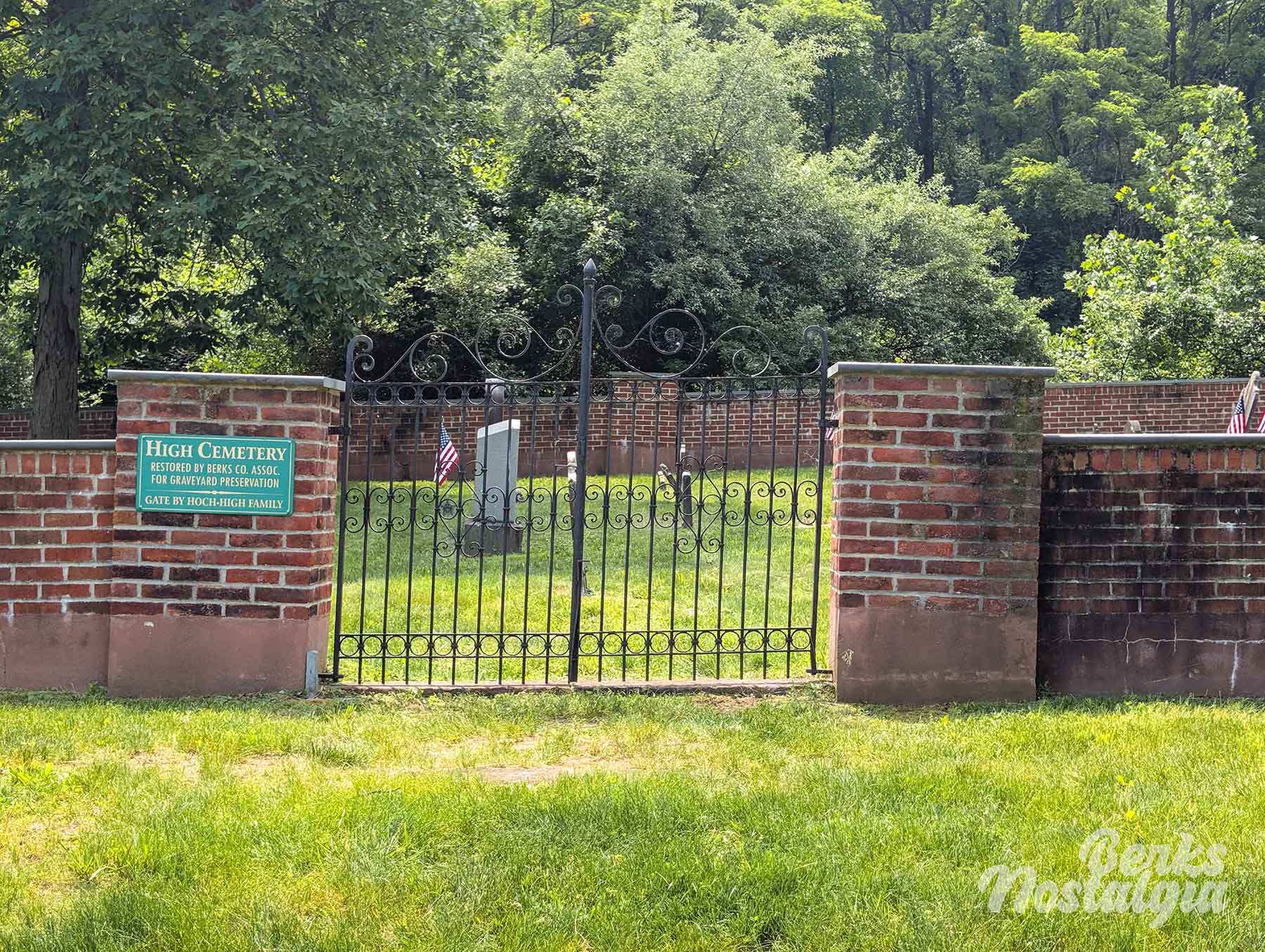
Seven months later Esther was on her own deathbed and had concerns over the future care of the graves of her husband and children. She directed in her will that a stone wall be built around the cemetery and it be maintained with money from her estate. Luckily, Isaac had children before his death and they would continue to live on and farm the land that their grandfather settled.
This included a grandson, Brigadier General William High, whose accomplishments included also serving as a county commissioner between 1816-1819, as well as a member of the State Legislature in 1832, and was an associate Berks County judge.
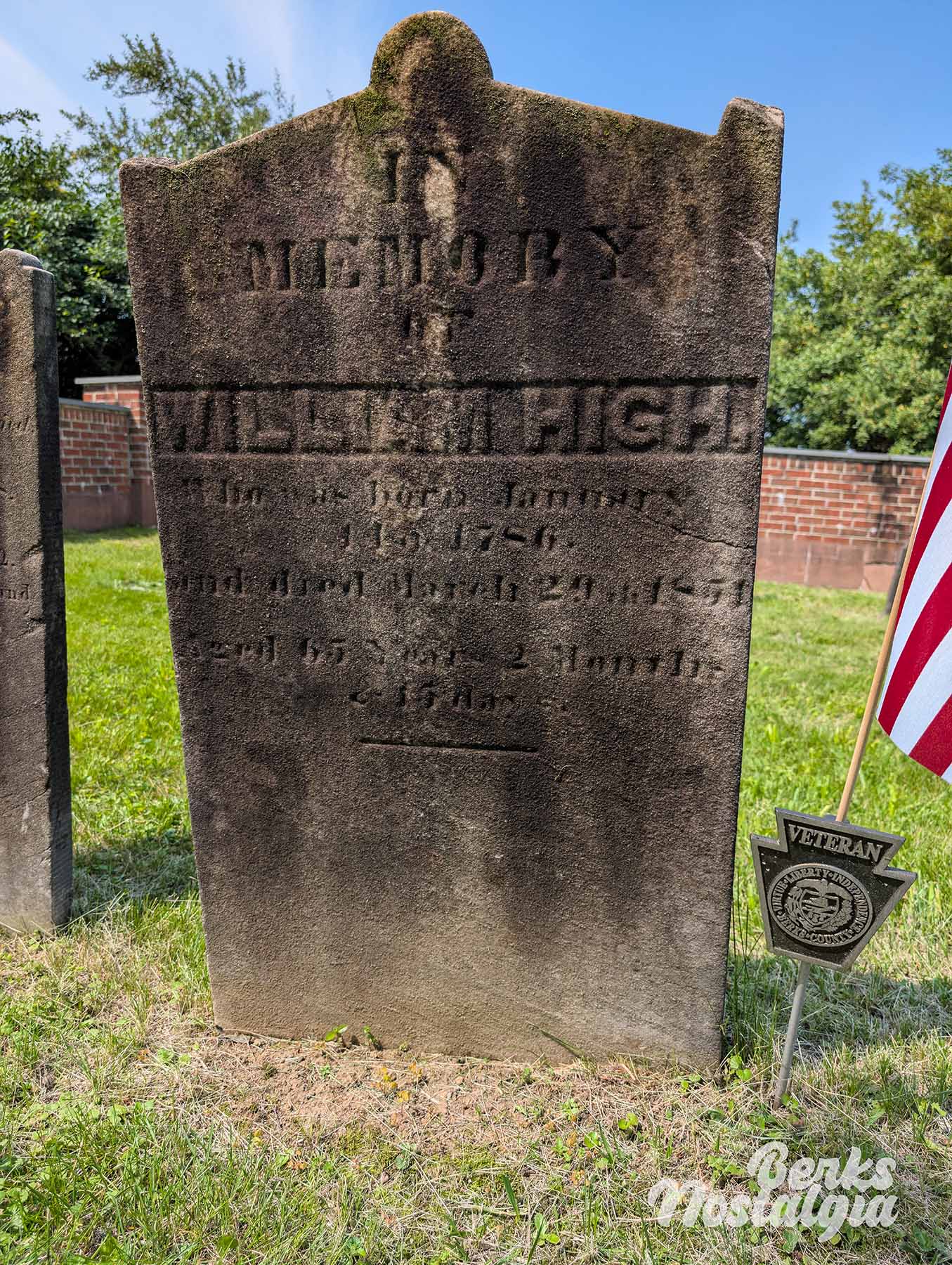
By the 1880s, Samuel’s great-grandson Ezra High lived on the property in a house he built next to the cemetery. He had the cemetery walls redone in brick with wood coping and added the ornate wrought-iron gates to the entrance. Ezra is also known for his collection of 6000+ native American arrowheads, some of which are currently on display at the Berks History Center, which he discovered all around the Poplar Neck property. In fact, the entire estate had once been sacred native ritual grounds.
The property stayed in the High family until Ezra’s son William Penn High sold it to Mary Archer, local political activist, philanthropist and neighbor, in 1909.
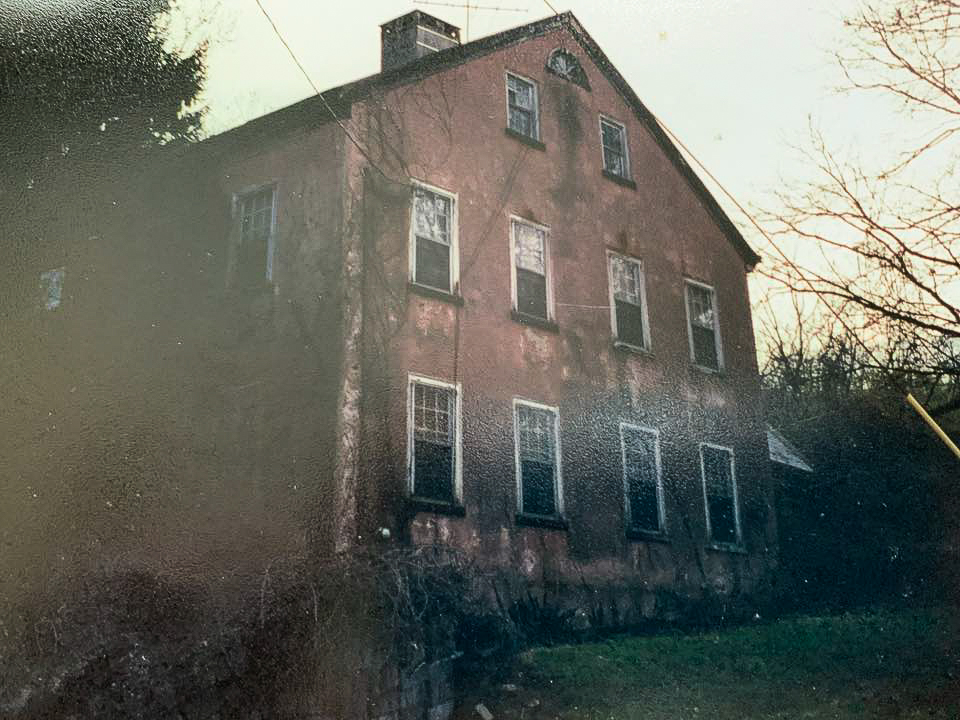
In 1973 the Western Berks Refuse Authority turned the entire property into a landfill. Many of the homes that once housed members of the High family were torn down. The tile-roofed stone house that Samuel built for Esther in 1755 was demolished in 2005 after sitting dilapidated for the entirety of the Refuse Authority’s ownership.
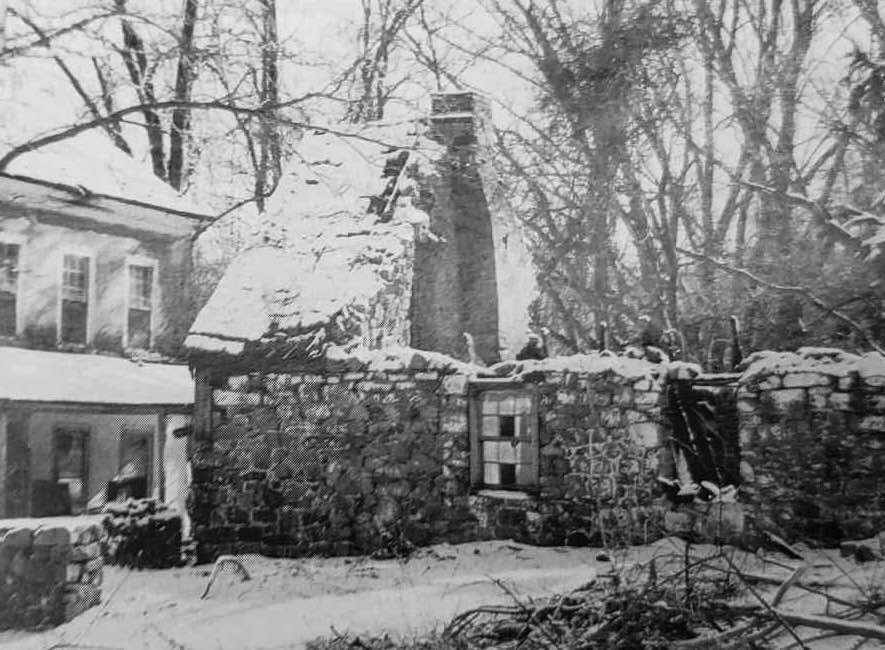
By 2006 the cemetery was in a dire state of disrepair. The brick walls were crumbling and the metal gates were falling off their hinges, as Esther’s estate had long been depleted of funds for maintaining it. The Berks County Association for Graveyard Preservation stepped up to the task of revitalizing the family plot. They rebuilt the walls and refurbished the wrought-iron gate. The area was cleared of fallen trees and debris, as well as the stones cleaned and restored. The project cost $26,000 to complete, all of which was raised by donations and association funding.
At this same time the landfill changed ownership to Waste Management, who promised to maintain better conditions at the Hoch Cemetery.

On June 5th, 2025 I visited this plot with Cole Swanger, Cliff aka the Wandering Woodsman, and Gary Koenig from Berks County Association for Graveyard Preservation. As far as we can tell they have, as it was in very good condition nearly two decades after making that promise.
With the help of Gary we examined and tried to verify the names of the stones, and found all of the descendants previously discussed. At one point Gary whipped out his dowsing rods, in which he walked around the area and found what he believes to be unmarked graves. Theoretically these could be the graves of servants or poorer people who lived nearby. Sometimes better-off families allowed neighbors to be buried unmarked in their cemeteries. Given that the land was once sacred to the natives, it would also not be surprising if the general vicinity included their burial grounds. Though any remains are long gone, as the area around High Hill has been completely reconfigured by landfill operations, evident by the pipes coming out of the ground to relieve methane gas from the buried trash.
Just outside the cemetery lies a much newer stone – it belongs to Max, a beloved guard dog who resided at the landfill between 1978-1984 when he tragically perished in a gas leak in an Authority garage he was in. Now, he guards the graveyard.
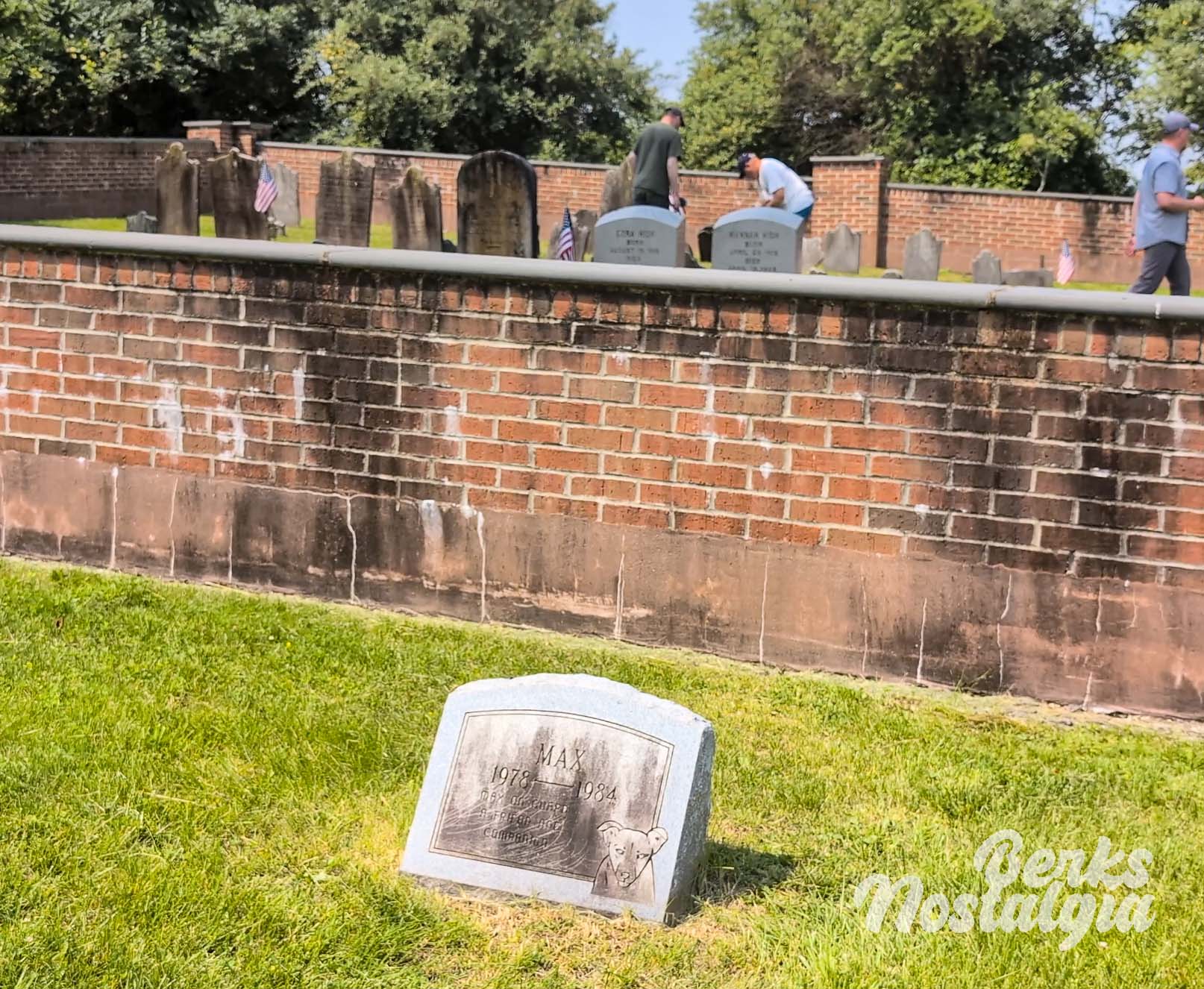
The future of this site remains uncertain, as the landfill has almost reached capacity and is set to close by then end of 2025. What happens next is anyone’s guess. Realistic options for the site are limited because of the half-century of waste that lies beneath its surface.
Sacred native lands to mountains of trash; an almost metaphorical contrast to how little consideration we give to the well-being of our environment compared to those who walked these grounds before us.
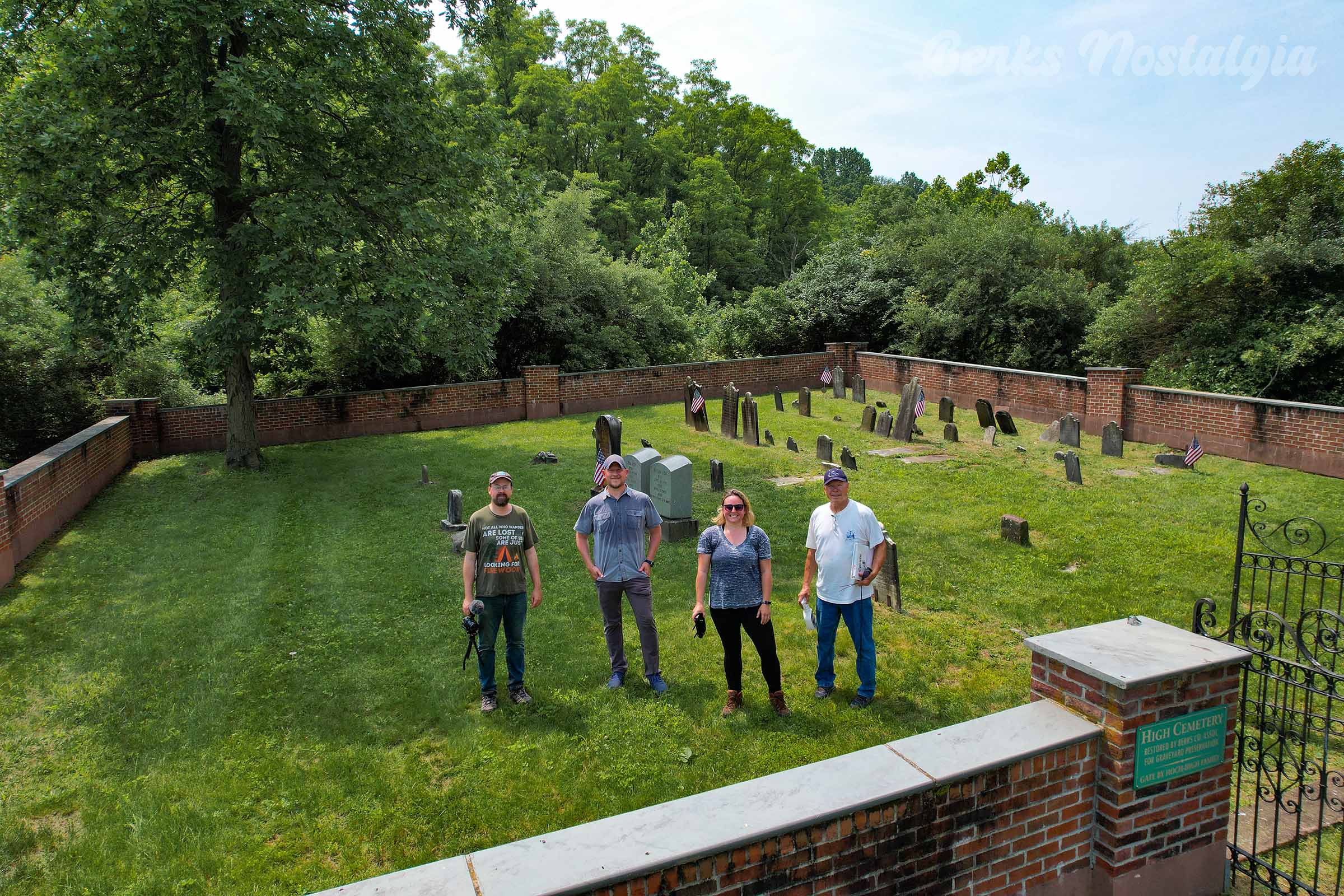

I think they might be my family. I would love to trace my roots. I was born Carole Ann Hoch. My dad was Roland Hoch. My grandfather was Walter Hoch, he resided in Fullerton/Whitehall,PA. That’s as far back that I know.